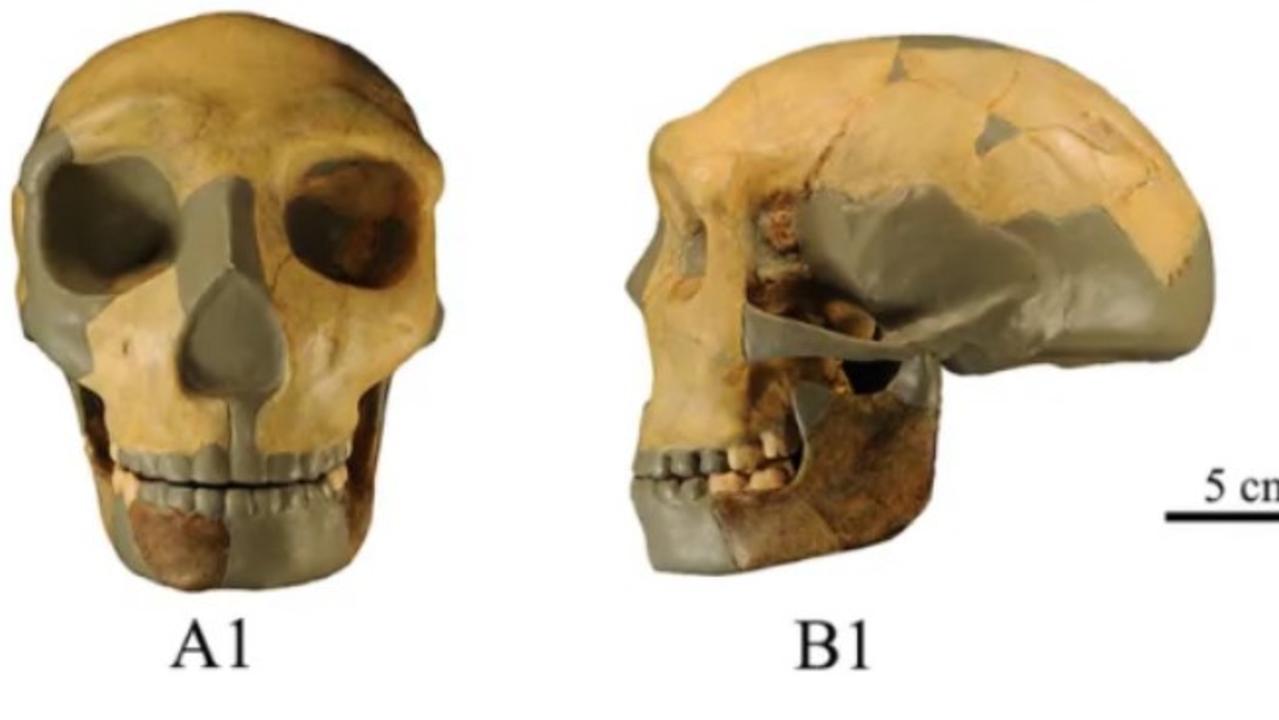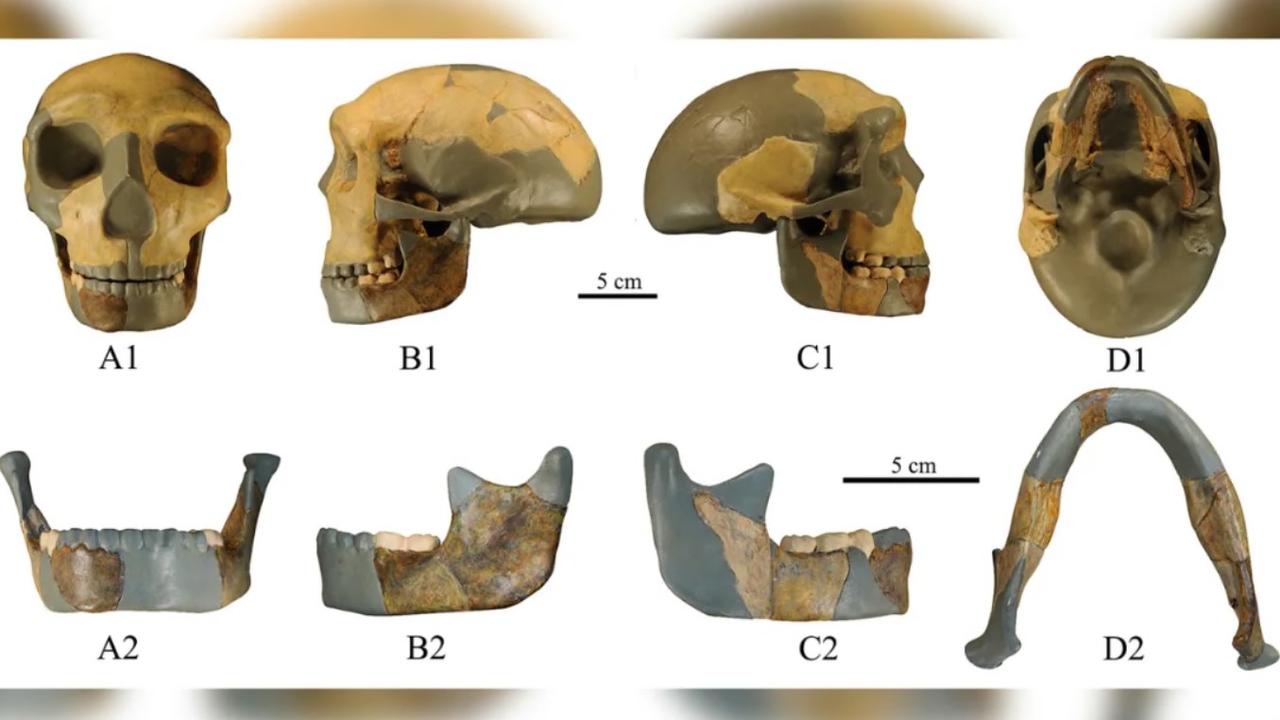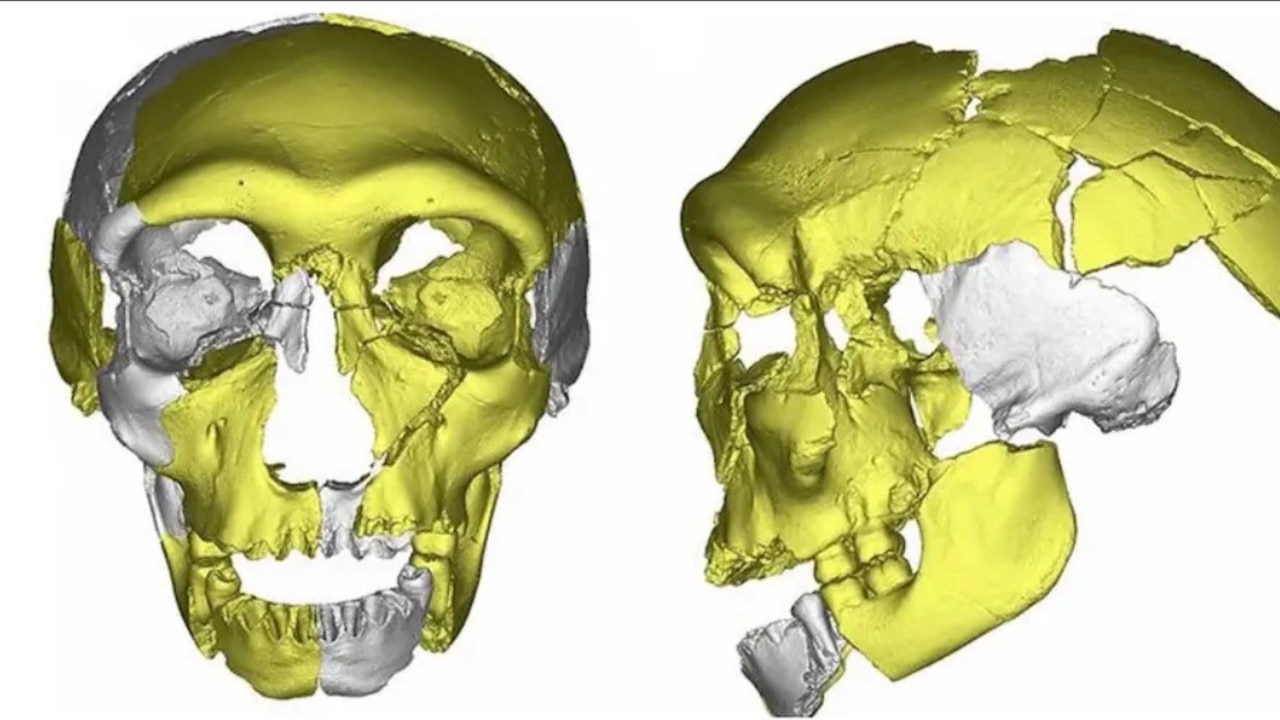Mystery over 300,000 year old skull found in China
An ancient skull with a startling feature has been unearthed, and researchers say it could rewrite the entire story of our evolution.

An ancient skull believed to be more than 300,000 years old is unlike any known human ancestor and could rewrite the story of our evolution, according to a new study.
A team of researchers from China, Spain and the United Kingdom first discovered the skull along with other fossilised remains in the Hualongdong region of eastern China in 2019.
The remains were found to be from a child aged around 12 or 13, and there were 16 specimens found altogether including a jaw and leg bone, all believed to have originated from the late Middle Pleistocene period.
The individual is known as HLD 6, and researchers say their facial features are “unexpected” and don’t fit into any existing taxonomic groups, according to a recent study published in the Journal of Human Evolution.
This leads the experts to believe that we may be missing a branch from the human family tree.

Interestingly, HLD 6 has a similarly shaped mandible to that of modern human species that evolved from Homo erectus sometime between 550,000 and 750,000 years ago.
However, its limbs, skull cap and recessed chin “seem to reflect more primitive traits”, Xiujie Wu, a palaeontologist from the Chinese Academy of Sciences, wrote in a study of the bones published on July 31.
It shares facial structure similarities – including not having a chin – with a different branch that evolved from Homo erectus, the Denisovans, a now-extinct branch of East Asian hominins that split from Neanderthals approximately 400,000 years ago.
The oddly-shaped skull has “never been recorded in late Middle Pleistocene hominin fossil assemblages in East Asia”, scientists said.

So researchers believe that HLD 6 must belong to a new lineage of hominins, a classification that doesn’t yet have a name, also believing that modern human characteristics may have been present 300,000 years ago.
Meanwhile, María Martinón-Torres, director of the National Research Center on Human Evolution (CENIEH) in Spain and author of the study said: “HLD 6 does not present a true chin but has some weakly expressed traits that seem to anticipate this typically H. sapiens feature.
“Hualongdong are thus the earliest fossil population known in Asia to present this mosaic of primitive and H. sapiens-like features.”



